Turkey is a huge country that spans two continents and is packed with beautiful places to visit. The country is known for the turquoise-coloured waters along the Mediterranean coast, the other-worldly landscape of Cappadocia and the historically rich city of Istanbul. However, if you’re happy to wander off the beaten track, there is a huge selection of hidden gems in Turkey just waiting to be explored.
Dotted around the country there are abandoned ancient ruins, secret waterfalls, partially-submerged villages, beehive-shaped houses and atmospheric bazars to inspect. Whilst most tourists flock to Antalya, Cappadocia, Istanbul, Fethiye or Pamukkale, there is an undiscovered Turkey that is often overlooked.
Having lived and travelled throughout Turkey for the last severn years, I want to share the best hidden gems Turkey has to offer. These destinations are unique and not included on most Turkey itineraries!

Disclaimer: Some links in this article are affiliate links, which means that if you purchase through them I receive a small commission, at no extra cost to you. This helps cover the cost of running this blog. Thanks for your support!
Unique Places To Visit In Turkey
Top tourist destinations in Turkey include Istanbul, Cappadocia, Pamukkale and the Turquoise coast and whilst these all rightly deserve a visit, there are many intriguing locations that are not on the tourist trail. These unique destinations in Turkey include historic monasteries, hillside fortresses, submerged cities and mysterious caves. Read on to discover 21 places to get off the beaten path in Turkey.
1. Ishak Pasha Palace
Not many who travel around Turkey make it this far east. For Doğubayazıt is a border town and the last frontier before entering Iran. However, those who do make it to this region of Turkey will be rewarded with a visit to the fortified Ottoman complex of Ishak Pasha Palace, which stands high on a hill guarding over the town.
Combining Turkish, Persian and Armenian architectures, the fortress, castle and mosque are intricately carved in stone which glows crimson red in the evening sun. The Palace is one of the few remaining examples of historical Turkish palaces.
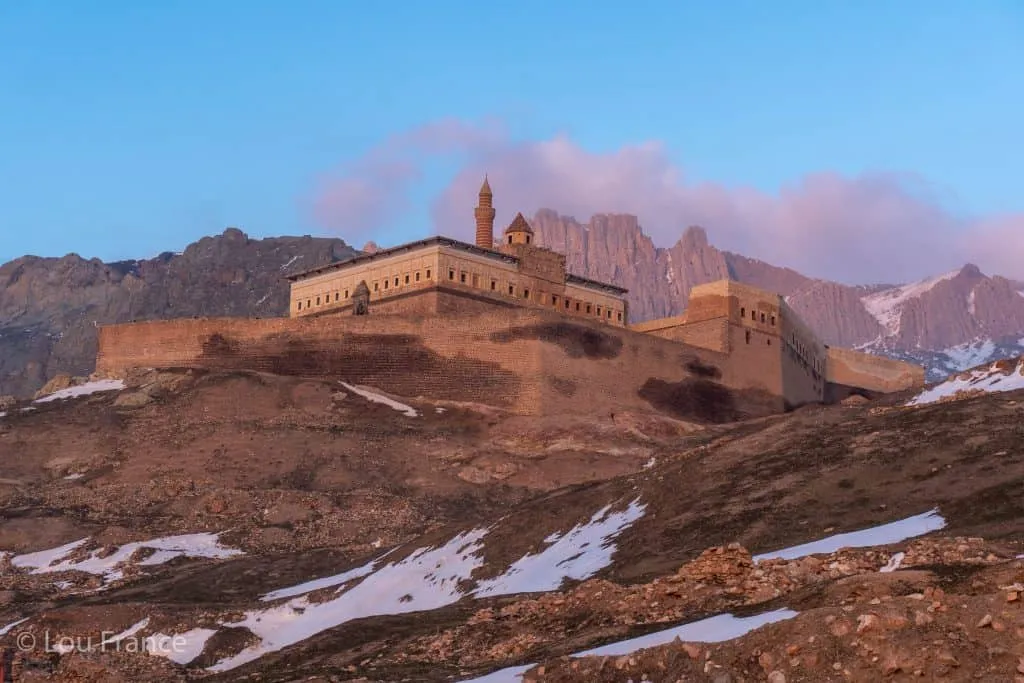
2. Arykanda
Arykanda was the party town of Lycia! Because of this, despite its size, it never became one of the “big 6” cities of Lycia (Xanthos, Patara, Pinara, Tlos, Myra and Olympos).
Arykanda is a vast and impressive archaeological site built over five terraces, so you’ll need a couple of hours here to fully explore here. Things to see include a small but very intact theatre boasting mountain views, an Odeon, Agora (shops) and the largest bath complex in Lycia. I guess all the merchants needed somewhere to recover after a dusty day on the road.
There are many more well-known Lycian sites to visit in Turkey such as Patara, Xanthos or Olympos, but since this is off the beaten path in Turkey, you’ll likely get it all to yourself. Visit Arykanda as a day trip from the seaside town of Kas or the bustling resort city of Antalya.
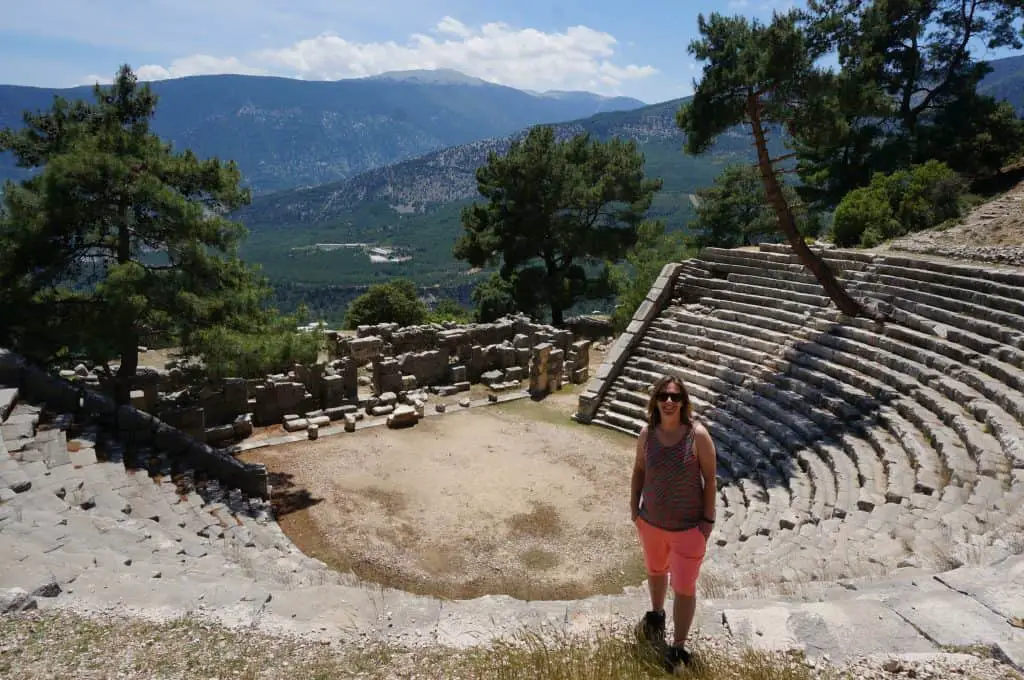
Related Reading
- Istanbul to Cappadocia road trip itinerary
- The best things to do in the gastronomy city of Gaziantep
- How to visit Butterly Valley near Fethiye
3. Şirince
A short drive up into the mountains from Selçuk (Ephesus) will bring you to Şirince village, which translates to cute in Turkish. The village was was previously inhabited by Greeks and their influence is still clear to see with the white washed houses and terracotta tiled rooftops. However Şirince is most well known for its fresh local produce and fruit wine.
I’ll be honest, the fruit wine isn’t really to my taste but it is still fun to try as you wander between the homes which are connected by windy, cobbled stone alleyways. A Şirince breakfast is one of the best Turkish breakfasts on offer with a huge array of jams, cheeses, olives and more, all flavoured with locally sourced herbs.

4. Dara Ancient City
Dara is a ruined ancient Roman town situated southeast of Mardin. Many people are put off visiting Dara due to its proximity to Syria, but wandering around the deserted ruins, nestled amongst which sits the current village, makes for a very unique experience.
The local folk around Dara are super friendly as you wander through what is essentially their farmland and even underneath their homes as is the case of the incredible underground cistern.
When arriving in Dara you will first see the necropolis with rock cut tombs. The bus tours stop here but it is well worth venturing further into the village to explore the roman bridges, walls, agora, cisterns and even part of the Silk Road itself.
You can easily spend hours exploring this little-known Turkish gem.

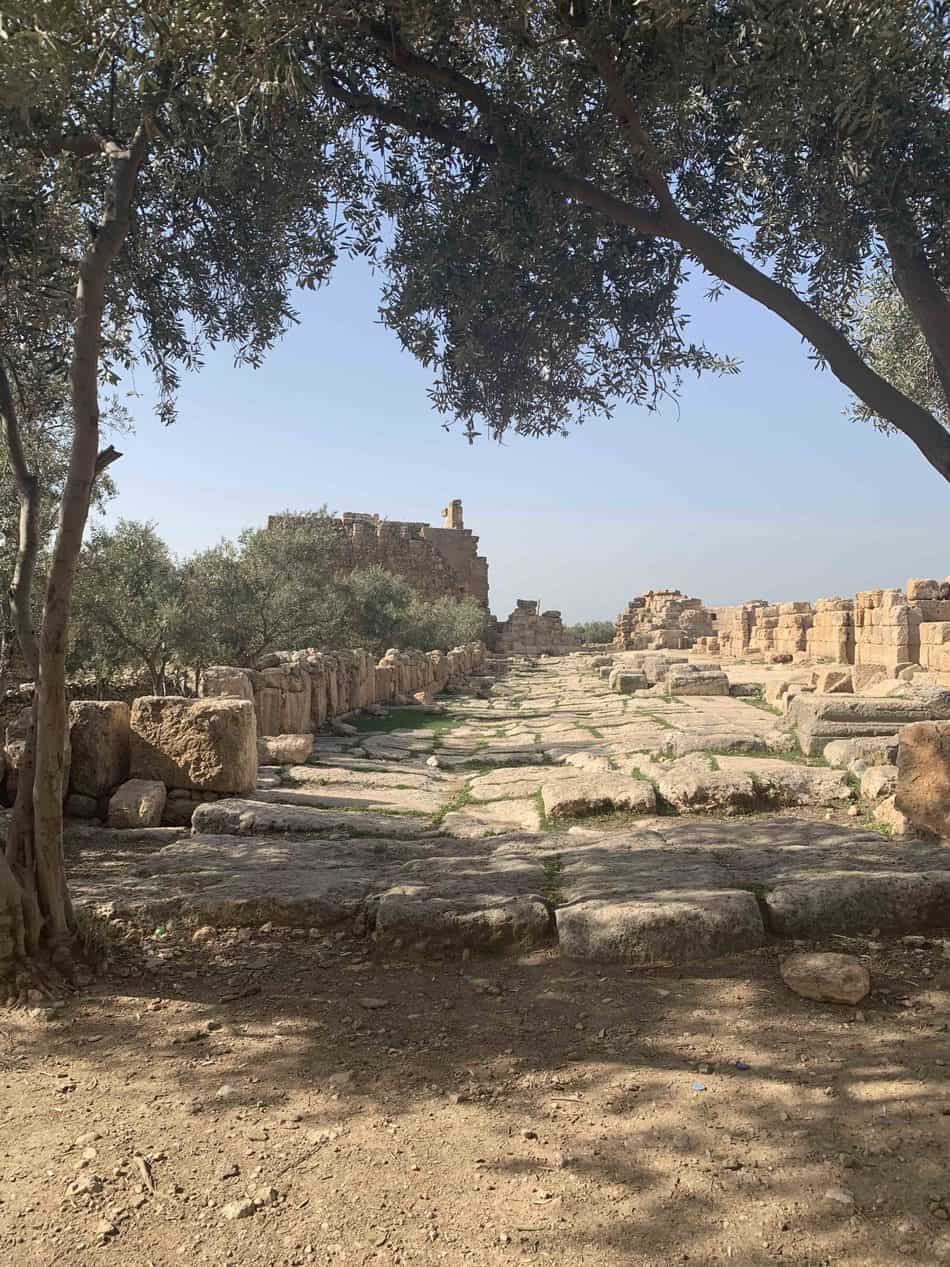
5. Hasankeyf Fortress
Hasankeyf was an ancient town in eastern Turkey which was recently flooded as the demand for fresh water has arisen. However, the location of Hasankeyf Fortress meant it was spared from the flooding.
The castle can still be seen perched high up on the cliff top, overlooking the new reservoir. The lush hillside has gorges weaving through it and is a beautiful area for hiking. The Castle was built during the Byzantine Era and is said to have severn entrance gates, three of which are hidden.
The entrance gate bears an inscription of the Ayyubids and is positioned by the stairs leading to the interior of the this fabulous fort. It’s a huge complex which houses the remains of various residential buildings, religious sites and cave dwellings.
Reconstruction of the Grand Mosque (Ulu Camii) is complete and stands out as the most impressive building on the site. The Big Palace is also receiving some renovation but it appears the various churches will be left untouched.
This extensive old ruin spills out over the hillside beyond the main buildings. The structures here are mostly cave houses, many of which were lived in until very recently.
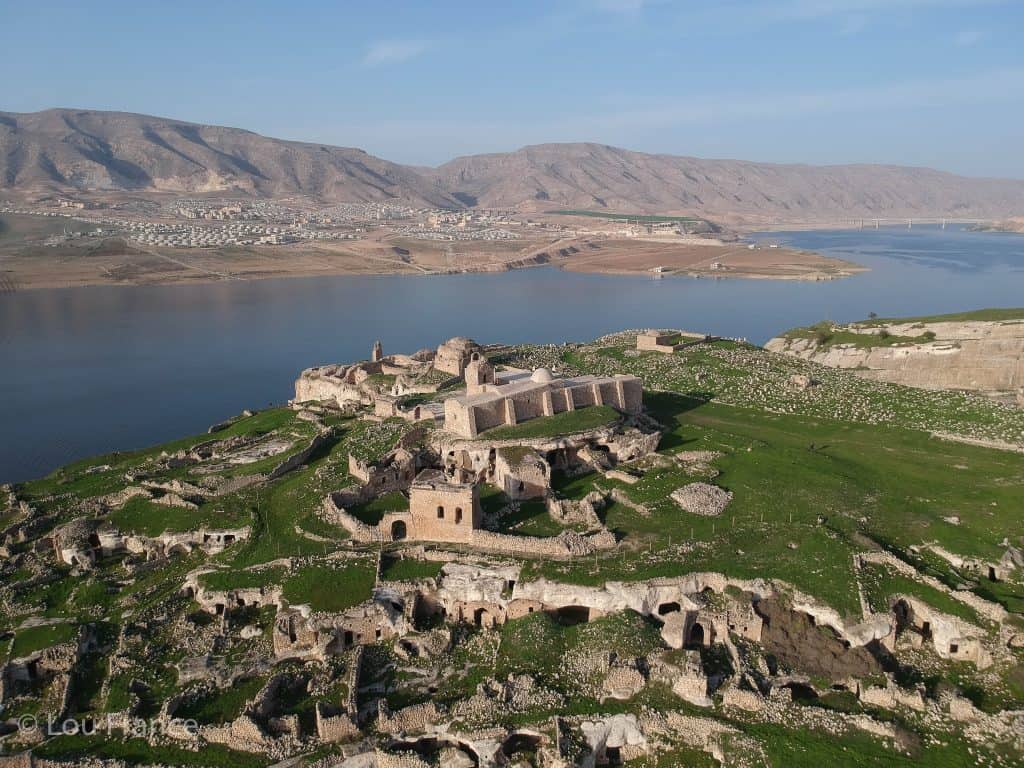
6. Varda Viaduct (Varda Köprüsü)
Built in the early 1900s, Varda Viaduct was constructed by German engineers as part of the Istanbul-Baghdad railway line. Also known as Giaour Dere Viaduct, the structure is 172 metres in length, 98 metres high and consists of eleven arches. The viaduct is known for its appearance in the opening chase scene of James Bond’s Skyfall.
The viaduct is located in Southern Turkey and is still in operation today. The stations either side of the viaduct are Hacıkırı and Karaisalı Bucağı, however if you want to ride the railway it’s best to take the Toros Express train between Adana and Konya. For a view of the viaduct and the gorge head to the Karaisalı side where there are a few cafes located on the edge of the gorge.
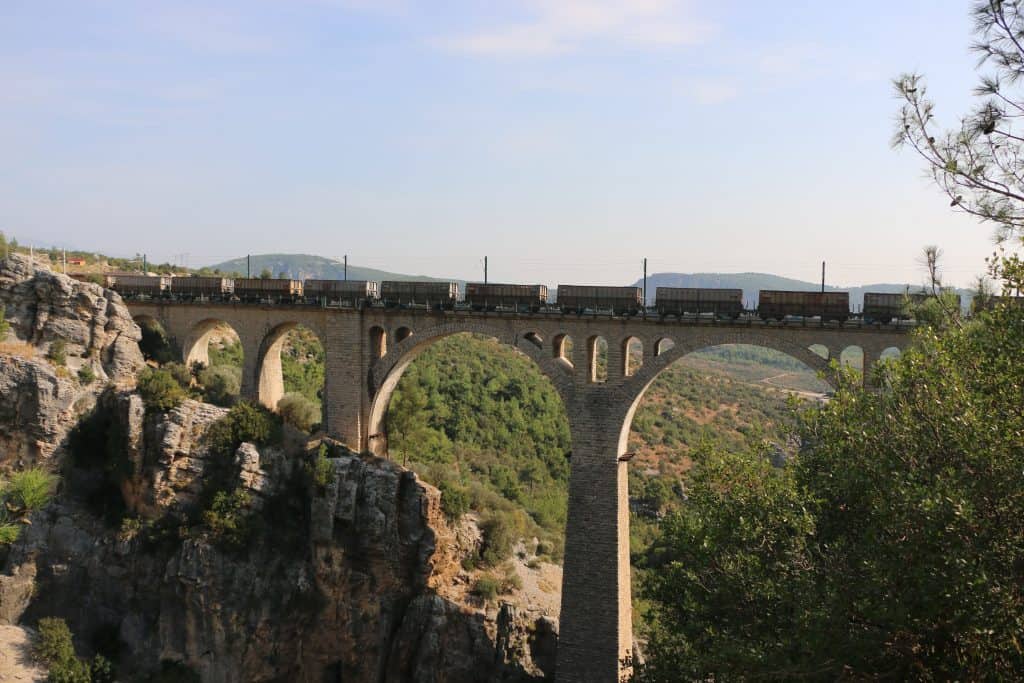
7. Sanliurfa Bazar (Souk)
Sanliurfa or Urfa as it’s also known is an ancient city in eastern Turkey. At the heart of the old town is the bazar, which is a hive of colour and activity. It’s one of the busiest markets I’ve visited during many visits to Turkey and certainly the most authentic.
Hidden away in the bazar are old caravanserais with high arched ceilings, crammed full of produce from all over the region. This fine market feels like it hasn’t changed too much from way back in the heyday of the Silk Road. It’s a great place to go shopping or to just get lost amongst the narrow lanes and take in the atmosphere.
The are several Hans or Inns dotted around the bazar. These old buildings are beautiful places to stop and kick back with a çay, before continuing on with your explorations.
A little further away from the main bazar, just opposite Golbasi Park, there is a whole section dedicated to gold, where incidentally it’s a good place to exchange cash for decent rates.


8. The Four-Legged Minaret, Diyarbakir
There are no shortage of mosques and minarets to visit in Turkey, however the most unique minaret in Turkey can be found in the city of Diyarbakir. Due to civil unrest, Diyarabkir is city that has been off the beaten path in Turkey, however now the situation is quite stable.
The Sheikh Matar mosque in Diyarbakir’s old town is home to the very unique four-legged minaret. The structure was originally an outlook tower dating back to 906 BC but it was converted into a minaret in 1500, during which time it was decided to keep the unique four-pillared base.
The four pillars are said to represent the four denominations of Sunni Islam and local legend has it that anyone who passes severn times between the four columns will have all their wishes granted.
However, the minaret was the location of a political assignation in 2015 and it has become a symbol of the recent troubles in Diyarbakir as the bullet holes in the minarets “legs” can attest to.
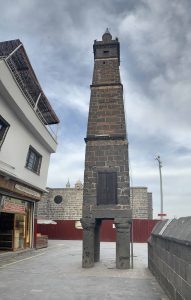
9. Eski Halfeti and Rumkale Fortress
Eski Halfeti (Old Halfeti) is an old village which was partially flooded when the Euphrates river was dammed in 2000. The old mosque is half submerged along with much of the village, but the hilly parts of village remain.
However, all is not lost for the residents of Halfeti as the destination has become a new tourist destination. There are a few restaurants and tea houses left in old Halfeti overlooking the reservoir which are kept busy by tourists making their way to this unlikely attraction.
A 30-45 minute boat trip from Halfeti marina is a popular activity on which you can view Rumkale fortress which is perched on the hillside above the reservoir, as well as the sunken minaret of Savasan, another settlement lost to the flood.
It’s a great undiscovered gem in Turkey to break up a journey between Gaziantep and Sanliurfa or as a day trip from either city.
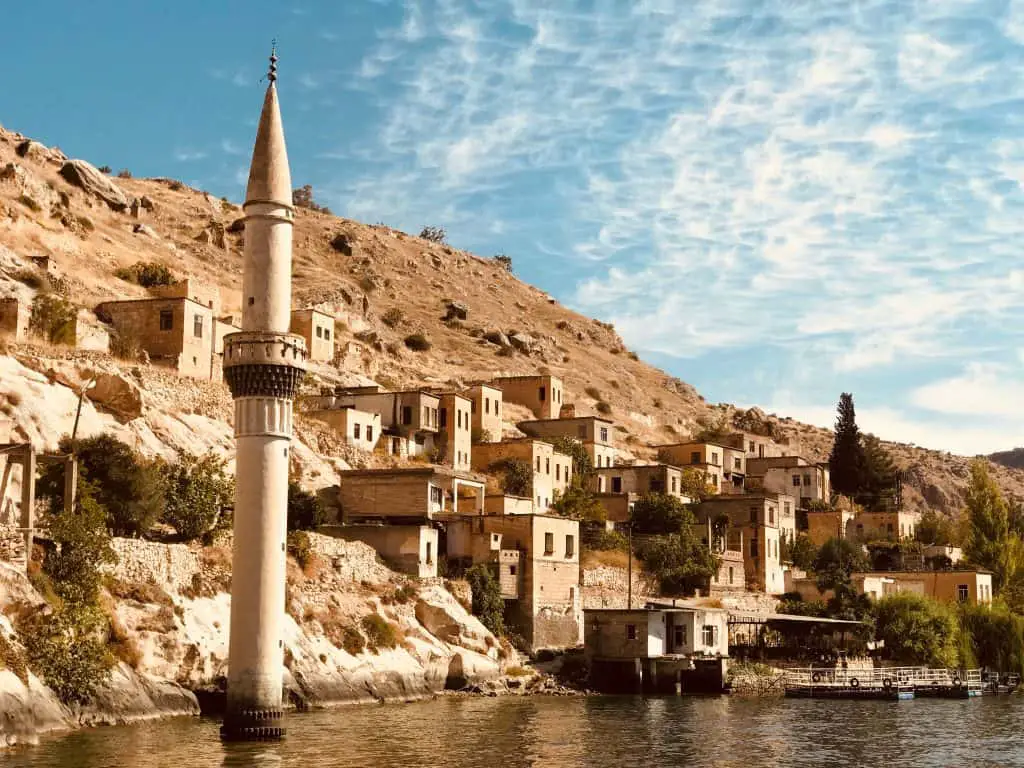
10. Gobekli Tepe
Perhaps one of the most talked about historic sites in the world at the moment, this ancient site in Turkey is making archeologists rethink how human civilisations developed. Gobekli Tepe is an amazing temple complex with detailed carved pillars dating back to 9000BC. (For reference, this predates Stonehenge by a massive 6000 years!)
It’s touted as Sanliurfa’s top tourist attraction although it’s actually 12km from the city itself. Excavations at Gobekli Tepe are ongoing so it’s a site which will no doubt grow over time.
There is a small but informative museum on site which helps to explain the findings so far, along with a stunning audio visual display. The Archaeological museum in Sanliurfa holds many of the artefacts found at this Gobekli Tepe and other similar sites in the area, such as Karahan Tepe, Sefer Tepe and Hamzan Tepe.
These other sites are yet to be extensively explored but are attracting much interest from the worlds archaeology community. If you like Gobekli Tepe, be sure to visit Karahan Tepe which they believe might be even older!
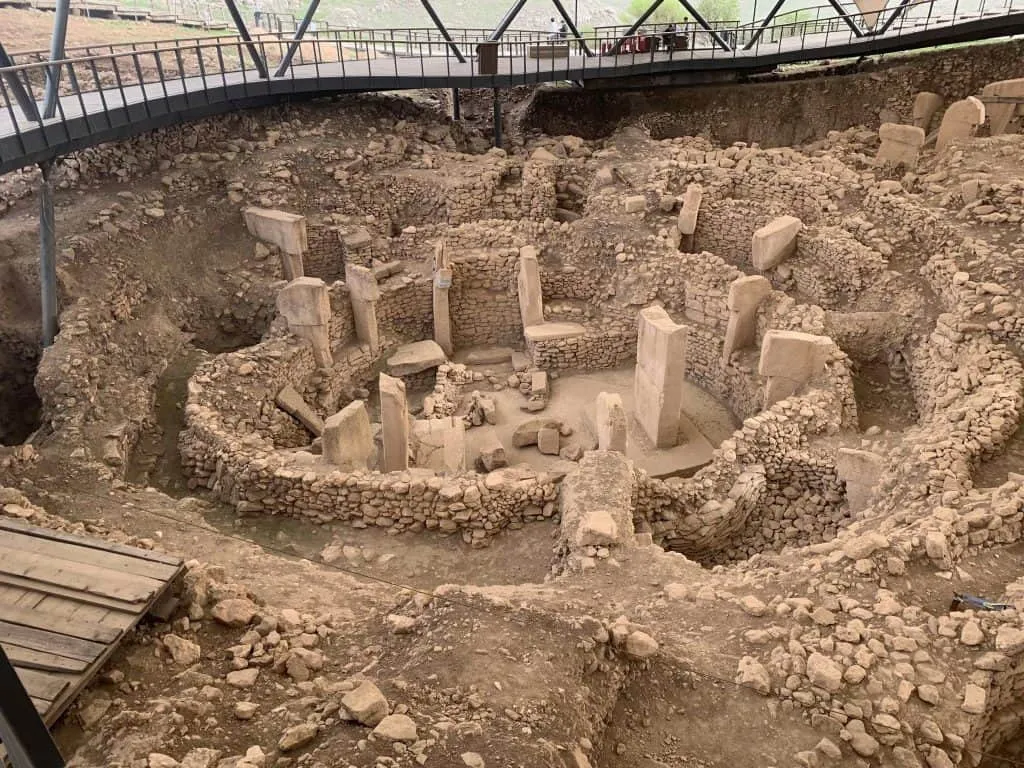
11. Severan Bridge
Severan Bridge (also known as Cendere Bridge) is a fabulous Roman bridge spanning the Cendere River. This beautiful, single arch bridge was built in the 2 century AD and is easily the most impressive Roman bridge I’ve ever seen.
Three out of the original four Corinthian columns are still standing, each with Latin inscriptions. The fourth column, dedicated to the son of Roman Emperor Severus (Greta), was removed by his brother to damn his memory following his assassination.
Restorations of the bridge took place in 1997 when the bridge was still being regularly used. Today, no vehicles are allowed on the bridge but you can walk over and admire the carvings on the columns. The bridge can be visited as part of a trip to nearby Nemrut Dagi which is one of the most beautiful places to visit in Turkey.
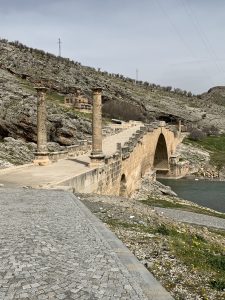
12. Anazarva Ancient City
Anazarva is a ruined Roman era city found amongst the village of Dilekkaya in Southern Turkey. Next to the village you can find an impressive entrance gate leading to the remains of colonnaded street and amongst the fields, you can find a Roman era aqueduct.
However, perhaps the most impressive part of this Turkish hidden gem is a fortress that runs the length of the nearby hills. There are several ruined buildings worth exploring at Anazarva Castle which can be accessed by climbing up the hill from the ruined Byzantine church.
Your efforts will also be rewarded with long reaching views of the plains in either direction. The battlements snake their way the length of the hill in either direction which are reminiscent of a certain Great Wall in China!

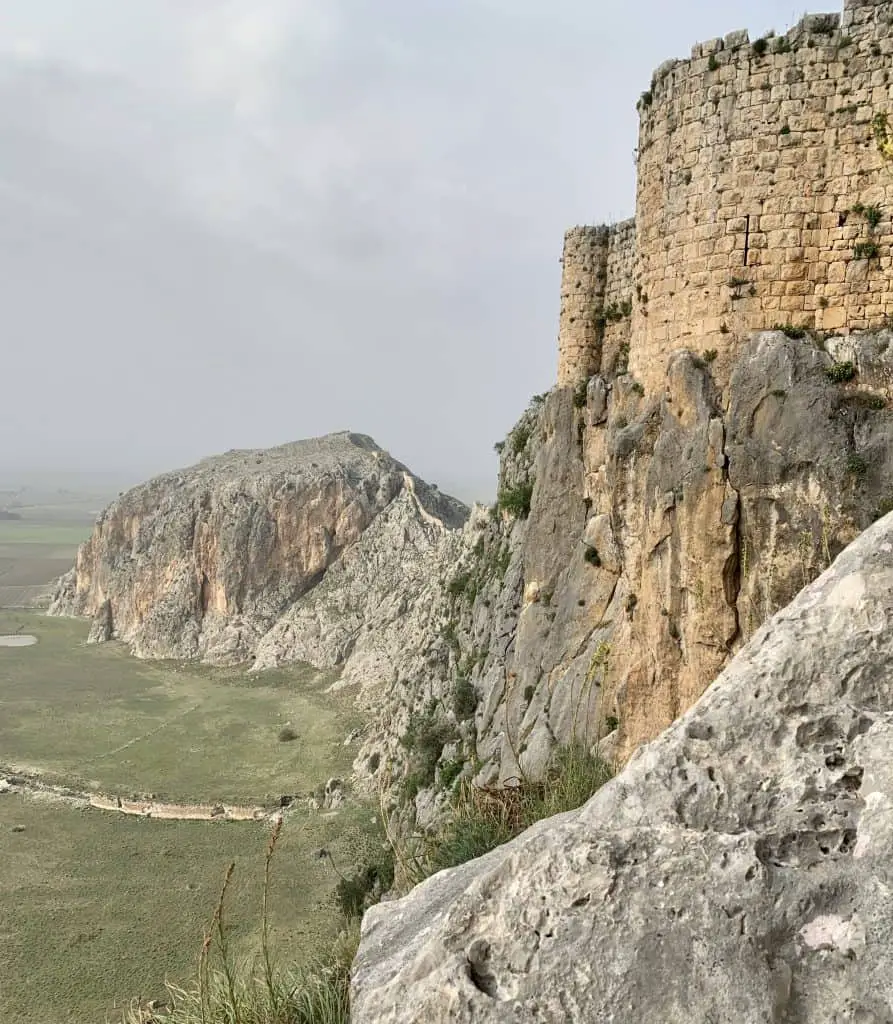
13. Snake Castle (Yılankale)
Like Anazarva, Snake Castle is another fortress located along the plains of Çukurova in Adana province. Castles were built on the hilltops for security and to communicate with each other. There is debate over who first constructed the castle but it’s thought to be a 12th century Armenian castle built during the Kingdom of Cilicia.
Local folklore believes Snake Castle gets its name for being home to Shahmaran, who was a mythical creature with the head of a woman and the body of a snake. Others suggest the name comes from the castles snaky, twisted walls.
The castle was renovated in 2014 and is open for visitors. Clamber up onto the ramparts for for fabulous views of the surrounding countryside. There is a cafe in the car park to reward yourself with a drink or snack once you are finished.

14. Muradiye Waterfall (Şelalesi)
There are beautiful waterfalls scattered all around Turkey with the largest being Tortum waterfall in northeastern Turkey and one of the most popular being Duden in Antalya. However, Muradiye Falls near Lake Van in eastern Turkey is arguably the most beautiful.
Found on the Bend-i Mahi Stream, these 18 metre high falls regularly have a rainbow at its base and in the depths of winter can often freeze.
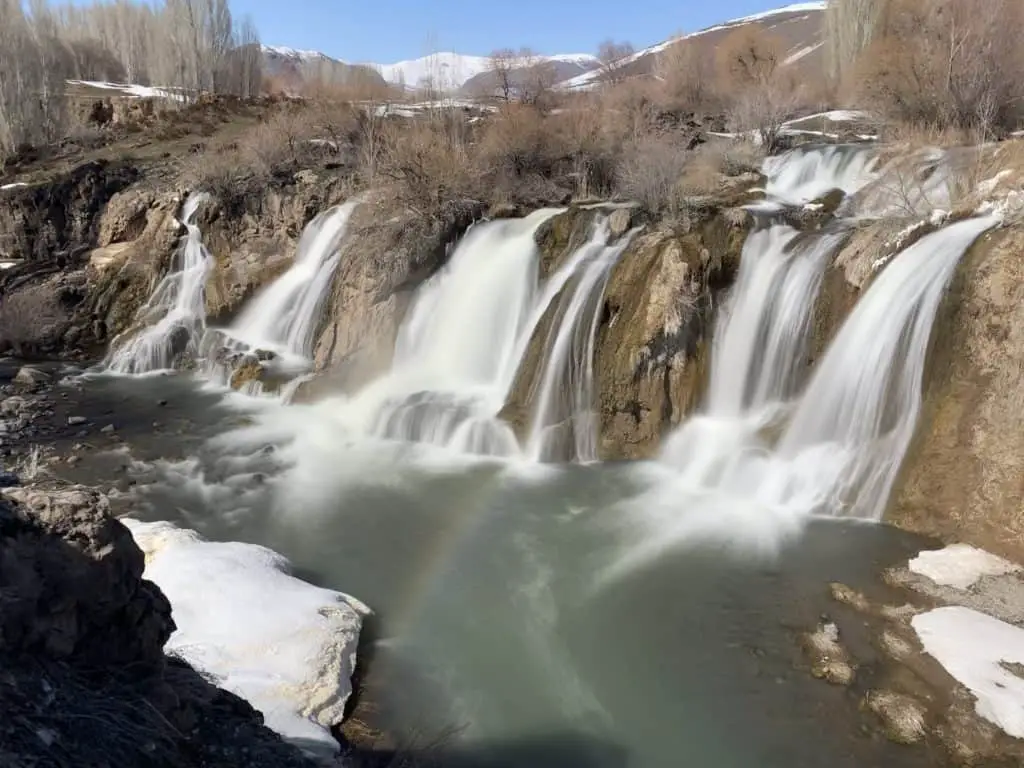
15. Adamkayalar
I’ll warn you in advance, visiting this site involves a tricky scramble and a route that is not obvious to see. Found on the side of a cliff face overlooking the beautiful Devil’s Canyon, you can find 17 Roman-era reliefs.
The carvings are of warriors wielding swords and axes, including one soldier who is accompanied by his wife and child. It’s thought the reliefs were carved by the relatives of the dead to immortalise their memory.
The style of the carvings suggest this necropolis dates back to between the 4th century BC to 3rd century AD. Adamkayalar is located about 8km north of Kızkalesi.
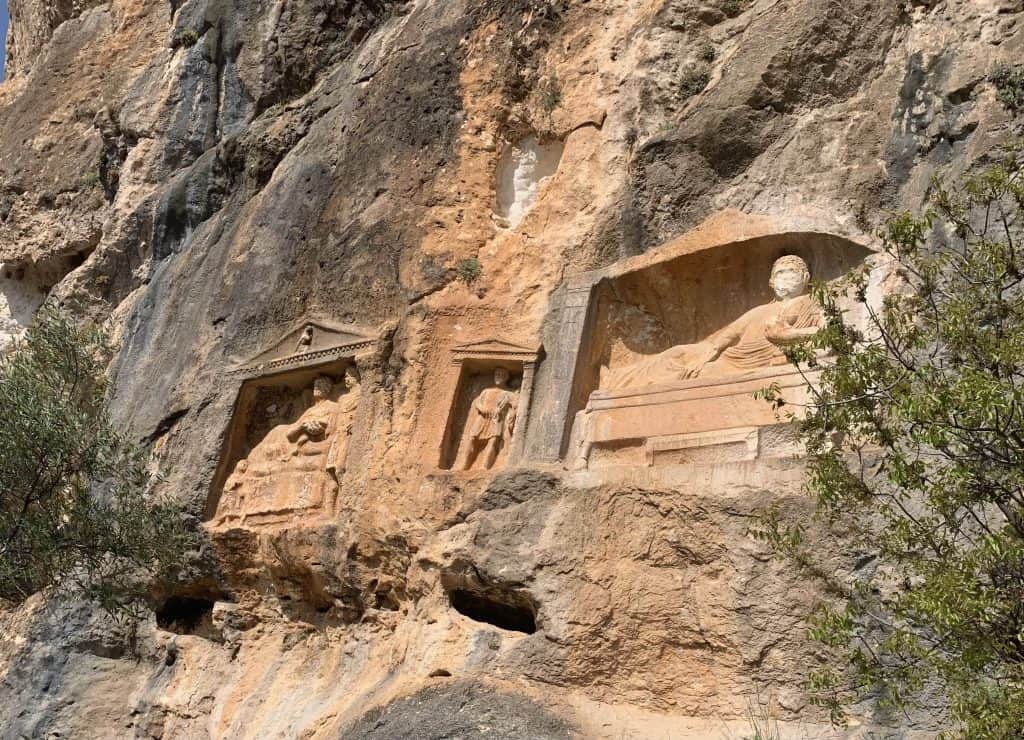
16. Gilindire Aynalıgöl Cave (Mağarası)
Gilindire cave was discovered by chance around 10 years ago by a shepherd who was seeking shade from the summer heat. Research shows that the submerged features were formed before the last ice age and pottery finds demonstrate the cave has been used by humans since the late Neolithic period.
Our decision to visit these caves was a spur-of-the-moment thing so we had no idea of what to expect. However, we were really pleasantly surprised by what we found. This deep cave located along the coastline west of Mersin, extends deep underground and is full of impressive stalactites and stalagmites. These unusual formations continue from cavern to cavern, but the crowning glory of this cave is the gorgeous azure-blue lake that is found at the end of the cave. What a treat!
Be warned, unlike most caves, Gilindire cave is very hot and humid so can feel a little claustrophobic the deeper you go.
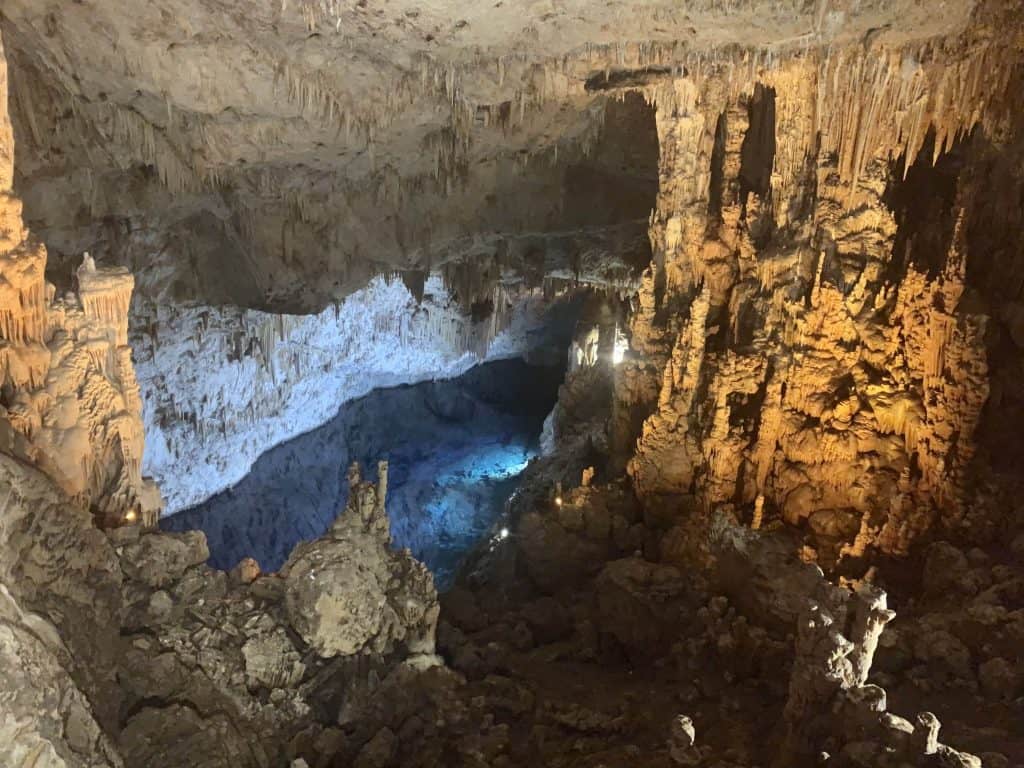
17. Akdamar Island, Lake Van
Lake Van is a serene lake in eastern Turkey surrounded by mountains and steeped in history. Not far from the city of Van there is a small island called Akdamar Island. This is one of four islands on this high altitude lake and is home to one of the most impressive examples of Armenian religious architecture.
Dating back to 900AD the Holy Cross Church is built of red coloured tufa stone. Inside there are some surviving frescoes but the prettiest aspects of the church are on the outside, where master carvers have covered the building in reliefs depicting scenes from the bible. The island can be accessed by a short boat trip from Gevas and is best visited in springtime when the tree blossoms explode into soft pink tones.


18. Kızkalesi Castle
Kızkalesi Castle or Maiden’s Castle sits on an island a short distance off the coast from the resort town of Kızkalesi. This romantically placed Byzantine era castle is well worth a visit. Whilst it is possible to swim to the island, the easier option is to catch a boat from the pier.
Within the castle there are the remains of two chapels and a vaulted gallery to visit. Also clamber around the castle walls and towers for views out into the ocean.

19. Midyat
Midyat is a city in Turkey whose roots can be traced back to the Hurrians way back in 3000 BC. Various empires have ruled the city since including the Assyrians, Armenians, Greeks, Romans, Seljuks and Ottomans.
Old Midyat is a maze of old stone houses set around walled courtyards and is home to the remaining Syriac orthodox community. There are five Syriac churches dotted about the old town though they are not always open to tourists.
Midyat is an interesting place to wander around and less touristy than nearby Mardin. There are a few pretty caravanserais in the bazaar area where you can grab a Turkish cafe or chai. If you’re a fan of old wooden doors then this place is a must!

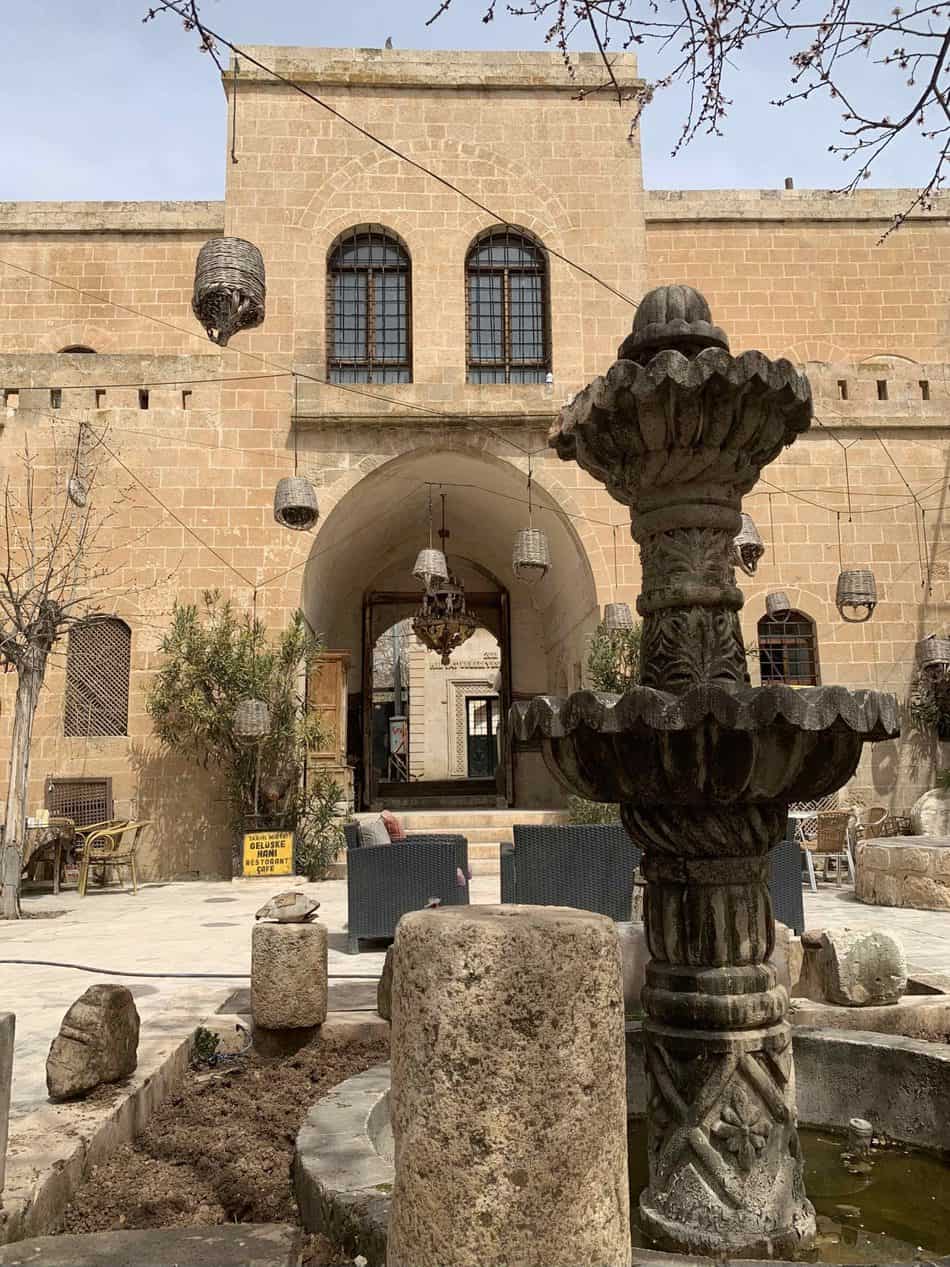
20. Mor Gabriel (Saint Gabriel)
Mor Gabriel is a monastery located in southeastern Turkey. This grand monastery sitting on a hillside overlooking the plains of Mesopotamia has been meticulously renovated in recent years. However, the original monastery was founded by two monks in 397AD, making it one of the oldest Christian monasteries in the world.
The monastery consists of two parts – the lower hsitoric part and the new upper part. In the old part, the Crypt has over 12000 relics of saints and martyrs and the tomb of Mor Gabriel himself. Beautiful parts of the monastery include the dome of Theodora, the Virgin Mary Church and the Great Church with its impressive mosaics.
As this is an active Assyrian Orthodox monastery, you will be guided around by a local Syriac volunteer who will explain the history of the building and the religion. The guides speak many languages and are very knowledgeable and engaging.
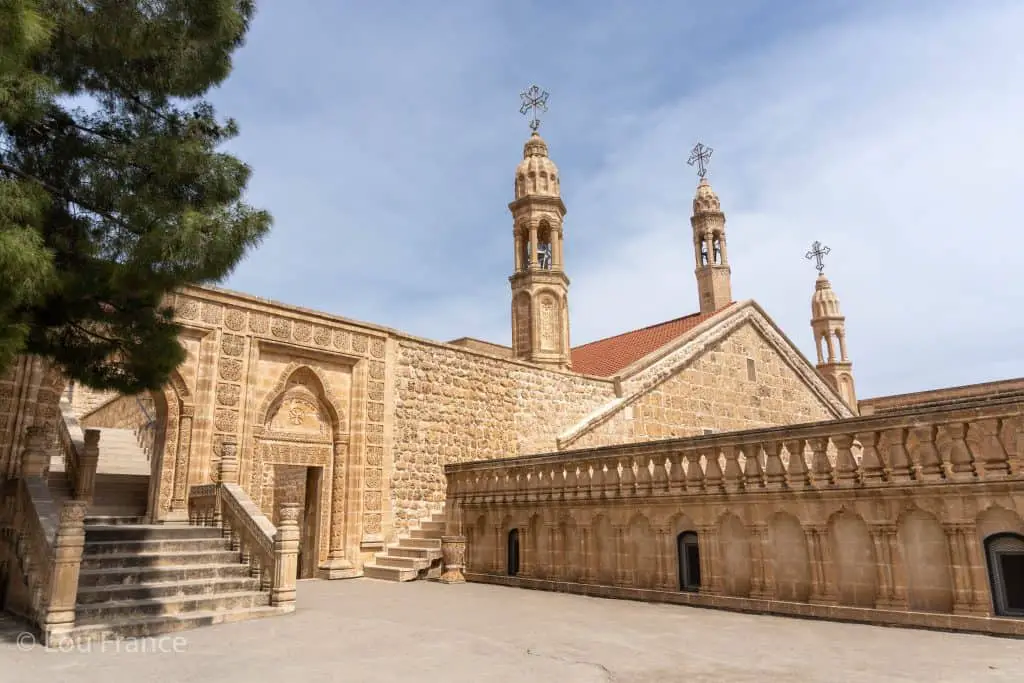
21. Harran Beehive Houses
The ancient city of Harran is about 30 kms south of Sanliurfa, very close to the Syrian border. Be sure to check the safety situation in the area before visiting since many governments don’t recommend visiting areas close to the Syrian border.
Harran has been made famous by the unique beehive houses which are dotted around the village. Some of the beehive houses have been restored and converted into museums. Entry is free but you are expected to leave a donation, the expectation of which far exceeds the cost of an entry ticket to any major site in Turkey.
Harran also has several historic monuments such as the old university (madrasa), city wall and citadel. The citadel is a fascinating construction built over many millennia and of a pretty unique design. Unfortunately the citadel is currently under extensive repair, so it’s not possible to enter this intriguing building. When finished this will be one of the highlights of Harran.
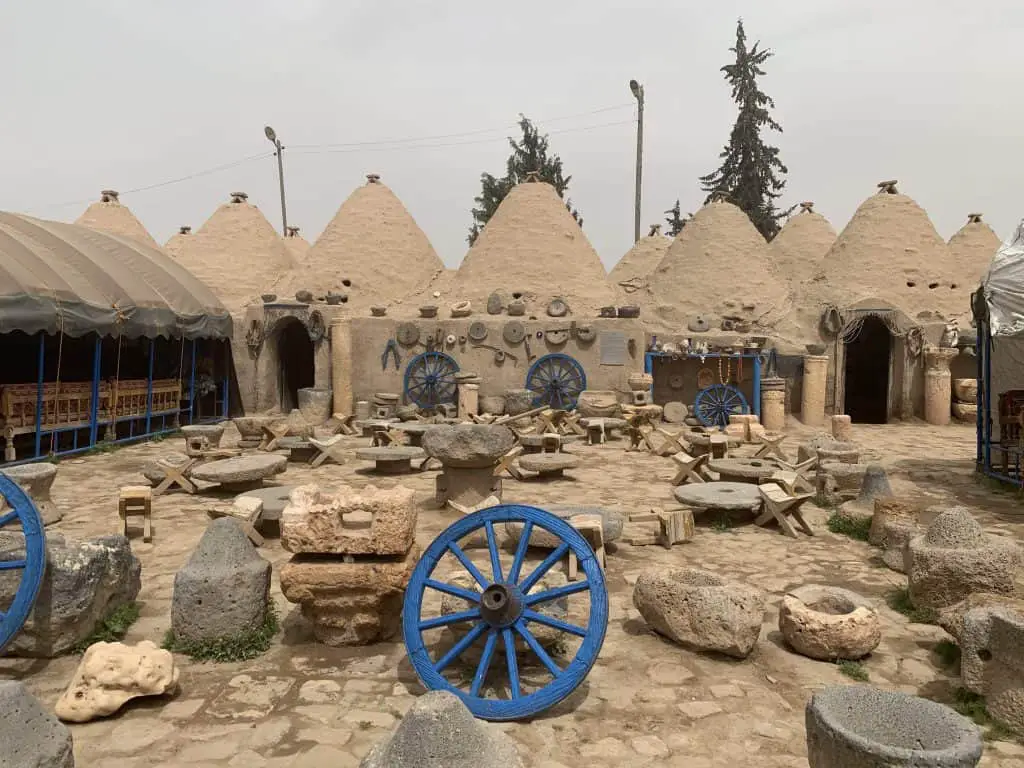
Hidden Gems of Turkey Summary
In this guide, I describe 21 places to truly get off the beaten track in Turkey. Most of the popular destinations in Turkey are located in the west of the country, typically along the Mediterranean coast. However, to visit the non-touristy places in Turkey you’ll need to travel a little further east.
In these more remote regions you can find beautiful waterfalls, hidden caves, empty ancient cities, Armenian churches and Syriac monasteries waiting to be explored. It is in these less-visited areas of this fascinating country, that you can explore the real hidden gems of Turkey.

